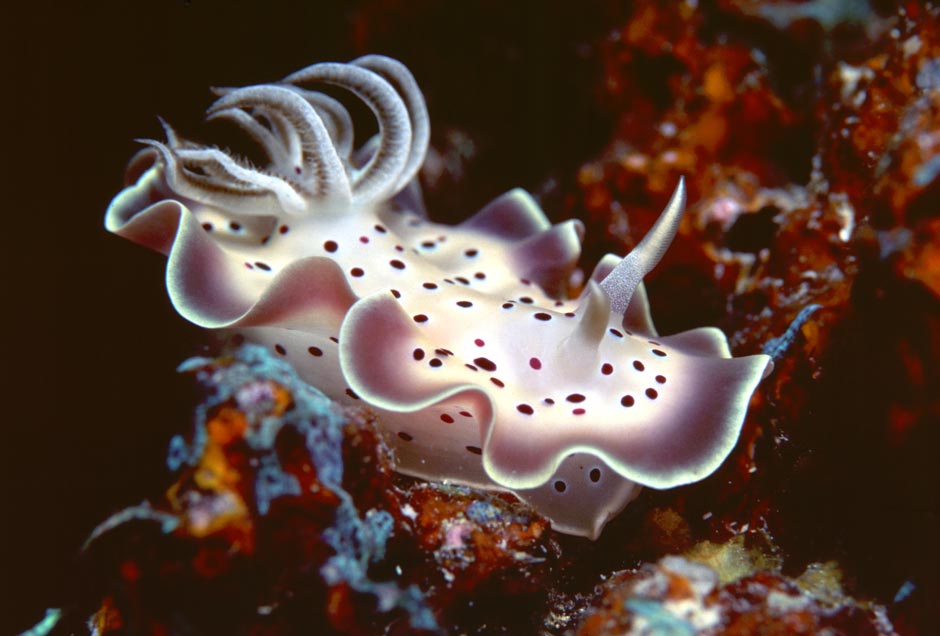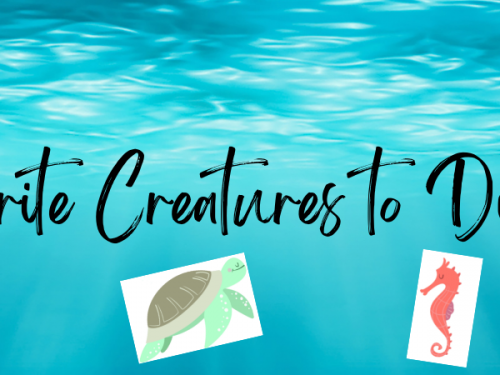 Only scuba divers could rate great slug spotting opportunities as an essential ingredient to their vacation. Essentially just an underwater slug, the nudibranch is a scuba diving enigma and you can’t fail to notice the excitement these little guys cause. Which, consequently is way out of kilter to their tiny stature. So what’s so special?
Only scuba divers could rate great slug spotting opportunities as an essential ingredient to their vacation. Essentially just an underwater slug, the nudibranch is a scuba diving enigma and you can’t fail to notice the excitement these little guys cause. Which, consequently is way out of kilter to their tiny stature. So what’s so special?
Their colourful ornateness and slow yet determined rhythmic bustle-like progress is endearing and hypnotic. Expect bold riotous colours and striking patterns as well as designer embellishments suitable for an outlandish fashion week runway show. Divers seem to bestow them with characters of their own. We’ve heard them described as looking like anything from ghosts to Shaun the Sheep and pretty much everything in between.
There are over 3000 species to delight enthusiasts and within species, there can be a significant amount of variation too. New species are regularly discovered. The variety this offers and the potential of discovery is part of the excitement and why many divers swim with their noses to the coral to find a unique specimen, so unique they might never see another. For underwater photographers, they’re a dream. Their slow pace and flamboyant nature make for easy to capture beautiful subjects.

While they inhabit the oceans worldwide, you’ll find the greatest number in warm tropical waters which happily is where most of us like to take our scuba diving vacations. If you’re an addict, and only the biggest fix will suffice then, The Philippines are where you must go. There are many great muck diving spots, and vibrant reefs sprinkled all over this island nation, each displaying their cache which would satisfy most cravings. For the biggest hit, however, Anilao is where it’s at. Divers have reported spotting over 90 different species in as little as ten days. Other locations include Indonesia with Raja Ampat, Lembeh Straits and Bali getting notable mentions.
As divers, we tend to use the term nudibranch broadly to cover all forms of sea slug, flatworm, bristle worm and their ilk, yet the actual definition of nudibranch is quite particular. Translated from Latin, nudibranch means naked gills or lungs which gives you more than a clue to how these soft-bodied molluscs breathe. The feathery like protrusion on their back is what this refers to. Their antennae at the front are not eyes but glands for smell; most can withdraw these when they sense danger. Unlike their plant destroying garden dwelling cousins, these guys are carnivores. They eat sponge, anemones, barnacles, other sea slugs and eggs. Their colours can come from their food source. They use this colouration either to blend in or to stand out and warn their predators of their toxicity. Some are faking it!
Commonly referred to as Û÷nudis’, they range in size from 4-10cm long, but there are larger species which can grow to 60cm long and weigh in at 1.5kg. Spanish dancers are one of the larger variety which get their name from their swimming fashion which looks like the undulating swishing skirts of a flamenco dancer. Not all nudibranch can swim and mostly they get around at a lazy 10m per day using a muscle Û÷foot’ and leaving a slime trail like their land-based brethren.
Nudibranch are hermaphrodites. They join, looking a lot like they’re holding hands, to mate and exchange semen and eggs and each lay eggs. Eggs look like lace or fine muslin attached to the reef in ruffles and are mostly laid in spirals. Nudibranch larvae have shells which they lose as they become adults while going through a process called torsion which spins their body 180 degrees on their foot. Their average life expectancy is one year, but some only live a few weeks.

To improve your chances of seeing the greatest number, wherever you are diving, make sure you have an excellent guide who shares your passion for these creatures. Wherever you dive, good local knowledge is essential for getting the most out of your diving. Talk to other local or experienced divers and do your research, know which species you’re looking for and most importantly find out what they like to eat as this will tell you where to look. You never know, you just might discover something new!
All photos courtesy of staff photographer, Rick Heydel







